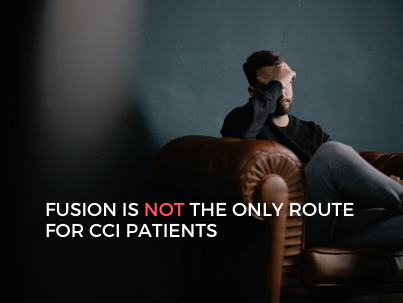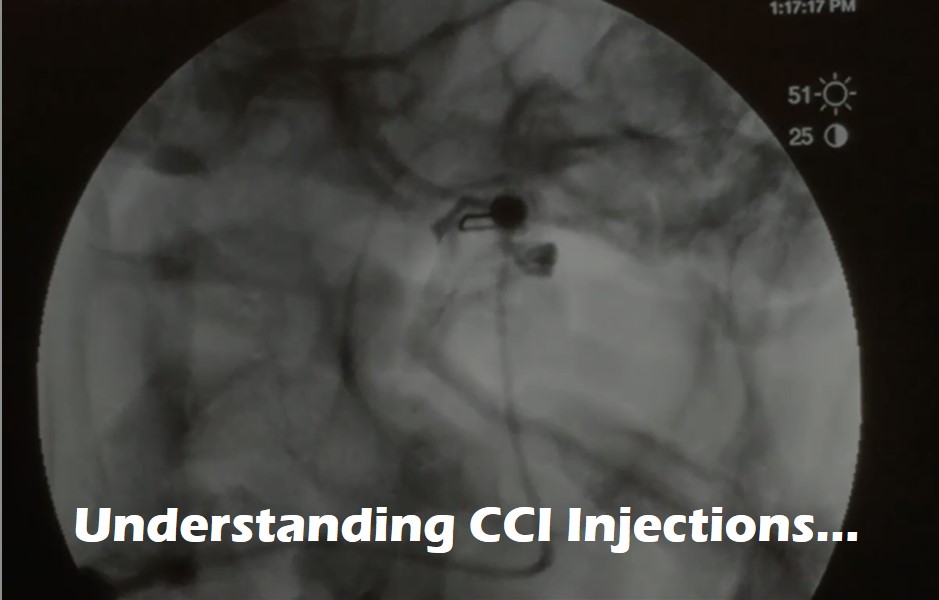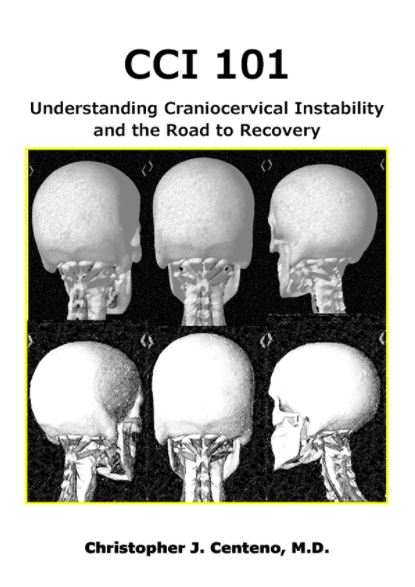Many craniocervical instability (CCI) patients get confused about the injection procedures that are available that may help their condition and how those intersect with the PICL procedure. This is understandable as it’s very hard for patients to conceptualize the differences in procedure types and the skill required to pull each off. Hence this blog will dive deeper into this topic.
What is the PICL procedure?
This is a novel direct injection into the ligaments that hold the head on.
What Injections Are Required Before PICL?
The PICL procedure is new, having just begun in 2015. Hence, our goal is to rule out that less invasive procedures will work before allowing a patient to pursue this new procedure. Here I have broken all of the injections in this journey into “Steps” as below. My goal is to explain our process to patients and educate them at the same time.
Procedure Steps 1 – 4
Step 1- Simple Posterior Prolotherapy Injections with Active Imaging Guidance
Prolotherapy is an injection technique designed to cause “proliferation” of a ligament. That means that its job is to prompt an inflammatory healing reaction which gives a damaged ligament another bite of the proverbial healing apple.
There are several different types of things that can be injected to prompt an inflammatory response, but the simplest and most commonly used is hypertonic dextrose. This is a concentrated sugar water solution, but that’s very different than “sugar water”. Why? The concentration of fluid has profound impacts on the cells in the body. For example, your blood is the concentration of seawater or 0.9% saline. If I take your red blood cells and expose them to distilled water at 0% saline concentration, they will all pop in about 10 seconds! Hence, hypertonic dextrose means a more concentrated solution than saline (usually 12.5%). This causes local cell debridement and a chemical shock to the area which prompts a healing response.
The good news is that prolotherapy is a cheap and powerful injection for ligaments. Hence, for the average CCI patient, trying posterior (from the back of the neck) prolotherapy is a good first step. However, please make sure you find that rare prolotherapist who uses x-ray guidance to guide the needle. Let’s dig in there for a second.
Most prolotherapists inject blind. This is a particular problem in this area are there are critical structures that can’t be injected like the vertebral artery. Hence, you want a prolotherapist who uses active x-ray guidance to help place the needle into the right spot. To do that requires injecting radiographic contrast, but many prolotherapists who have added a little fluoro to their injections don’t do it that way. So a critical question to ask is if the doctor will use both fluoroscopy and contrast to make sure he or she is in the right ligaments. If the answer is that no contrast is being used, then do not get prolotherapy at this location and find someone else.
Ultrasound imaging is also sometimes used and this should help keep you safe as well, although it takes an experienced ultrasound needle guidance expert to make sure the doctor stays away from injecting into the spinal canal. In addition, deeper posterior ligaments can’t be injected this way.
Patients who have problems when they look down may get relief here. The ligaments being injected are the supraspinous, interspinous, and nuchal ligaments. A high-level prolotherapy injection provider using fluoro image guidance can also inject the PAOM and VDL using contrast and fluoroscopy.
How many patients with known CCI fall out here and never get to the next step?
About 10% of patients will do well enough with these procedures that they will never get to Step 2.
Step 2 – Upper Cervical Facet and Other Higher Skill Level Injections
This is where we leave the easy procedures behind and get into procedures that are rarified air for most image-guided spine injection experts. These procedures focus around the upper facet joints in the neck at C0-C1 and C1-C2 and often C2-C3. These are unique neck joints that can get beat up by CCI and can cause all sorts of symptoms like headaches, dizziness, imbalance, neck pain, and even symptoms elsewhere since they control body position.

There are a couple of problems with finding providers that can perform these injections to rule out that you will get relief at this step. First, these injections require contrast injection and fluoroscopy. Hence, providers who offer simple prolotherapy injections rarely have the required skill level for these procedures. Second, these injections are not commonly performed by even highly experienced interventional spine physicians. Hence, few providers have a lot of experience injecting these levels. To give you a sense of how bad that problem is, my best guess is that we have fewer than a handful of providers in the United States who have done 100 or more of these procedures in their entire career. We likely have fewer than 50 physicians who have done more than 50. Since expertise in medicine comes with repetition, that’s a HUGE problem. Finally, most interventional spine physicians will only be comfortable injecting high dose steroids which can harm the cartilage in these joints and not things like PRP or bone marrow stem cells which can promote healing. That’s another big problem.
Having extensive experience injecting these joints, I wasn’t satisfied with the techniques that I had been taught. First, those techniques all too often resulted in the inadvertent injection of the vertebral artery and second the ability to easily get into the joint was poor, meaning the miss rate on the first try was high. Hence, I developed a new technique to more safely and accurately inject this joint. The publication on that new C0-C1 procedure technique is here and the video is below:
As discussed above, these are x-ray guided injections which means fluoroscopy (ultrasound is NOT appropriate). Contrast needs to be used to make sure that the doctor is in the joint before injecting a substance to help the joint heal. In addition, the vertebral artery runs through this region, so to make sure this isn’t inadvertently injected, millimeter precision is required. High-dose leukocyte poor PRP is usually used.
Again, it is VERY rare that these procedures are performed by prolotherapy providers. We have seen several of these providers tell patients that they’re injecting these joints, but they are clearly not. When we review the notes and call the clinics, they admit that they never used contrast to perform the procedure, so they are using a “fake and bake” version. Hence, in those cases, the patient has paid for these joints to be injected, but we must repeat them as these procedures were looking fore were never done.
The good news is that our clinic has injected these joints thousands of times, Meaning we are the world’s most experienced clinic in these injections (nobody else is even a close second). However, we do know various providers around the country that we trust to perform these injections safely and we are happy to refer to those providers if they’re closer to you.
Step 2.5 – Other High Skill Image Guided Injections
There are other high-skill procedures that our clinic will commonly add-in at this step. These are ultrasound-guided nerve hydrodissection procedures. These include commonly irritated nerves in CCI patients such as the Transverse Cervical (Superficial Cervical Plexus), Third Occipital, Greater Occipital, Lesser Occipital, and Tempero-Auricular. We use the growth factors isolated from the patient’s blood platelets to perform these procedures and carefully inject that around these nerves to break up scarring and promote healing.
How many patients with known CCI fall out here and never get to the next step?
About another 10% of patients will do well enough with step 1+ step 2 procedures that they will never get to Step 3.
Step 3 – PICL
The PICL can only be performed by highly trained Interventional Orthopedics doctor at the Centeno-Schultz Clinic. Once steps 1 and 2 injections have been completed, if the patient still has symptoms and they meet the instability and history requirements for PICL, then and only then can that procedure be performed. It’s important to note here that many of these procedures may be repeated or performed with PICL, depending on what the individual patient needs.
How many patients with known CCI fall out here and never get to the next step?
About another 75% of patients will do well enough with these step 1+ step 2 + step 3 procedures and never get to Step 4.
Step 4 – Fusion Surgeries
Upper cervical fusion surgeries are only to be considered if the patient fails PICL, as these procedures are MUCH more invasive than PICL. In our considerable experience with CCI, only a handful of patients will need upper neck fusions and fail all of these procedures.
The upshot? I hope this has been helpful. This is a place where many patients get confused so I wanted to make sure that I wrote it all out. There are lots of procedures to consider for CCI and making sure patients know how to match provider skill levels with what they need is critical.





